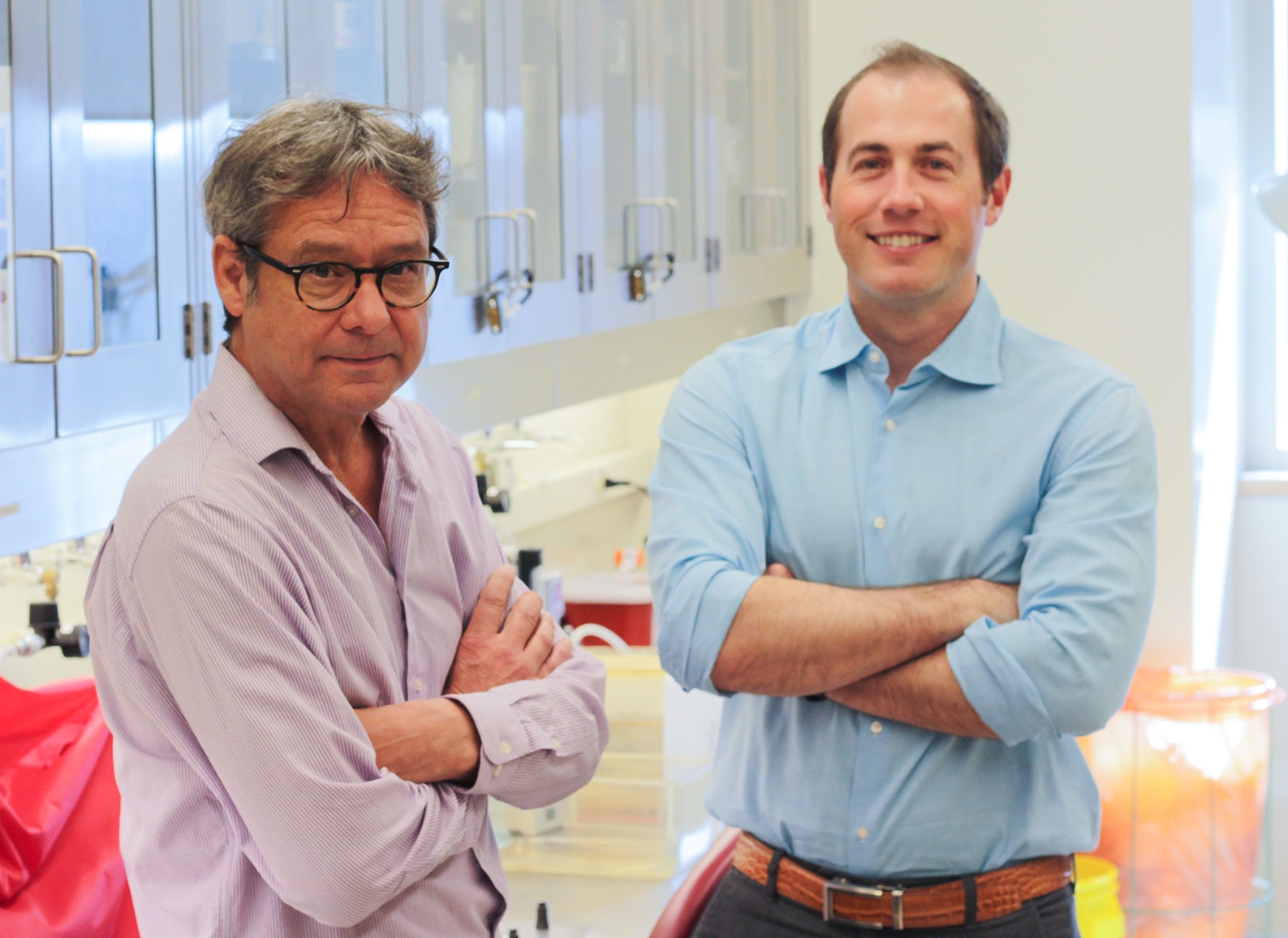
Greg Korbutt and Andrew Pepper, researchers with the Department of Surgery and members of the Alberta Diabetes Institute, are the recipients of two major grants supporting their research into making islet cell transplants easier, and more effective.
For Canadians living with Type 1 diabetes, transplanting new insulin-producing cells into their body can be attractive treatment option, but the harsh side effects of immunosuppressant drugs and the lack of donors significantly restrict that option for many. Two University of Alberta researchers are hoping new funding will help them solve both those problems and make pancreatic islet cell transplantation a much more accessible treatment for Type 1 diabetes.
Greg Korbutt and Andrew Pepper, researchers with the Department of Surgery and members of the Alberta Diabetes Institute, are the recipients of two major grants supporting their research into making islet cell transplants easier, and more effective. The first, $750,000 from Alberta Innovates, will support an investigation of the possibility of transplanting islet cells into different parts of the body. Traditionally, islet cells are transplanted into the liver, though that's not always the best place, Pepper said.
"The liver is actually a really hostile environment for islet cells; up to 70 per cent of the transplanted cells die within the first 24 hours," said Pepper. "As a result, we require at least two donors to treat one patient, which puts extra strain on a scarce resource of organ donors."
The pair are proposing a technique where insulin-producing cells are implanted under the skin of a patient in the forearm or abdomen, rather than injected into the liver. The cells are surrounded by a type of scaffolding that allows blood vessels to reach the cells, but keeps the cells from being attacked by the body. "Essentially, we'll be creating a mini-pancreas under the skin," Pepper said.
Korbutt and Pepper plan to support the grafts with new techniques in localized immunosuppressant drug delivery, funded by a $536,000 grant from the Juvenile Diabetes Research Foundation. Current transplant therapies involve immunosuppressant drugs that run through the whole body, but the drugs can potentially cause serious side effects in the heart, liver and kidneys. According to Korbutt, delivering the drugs specifically at the site of the graft could be more effective, and safer for patients.
Edmonton Protocol
Korbutt and Pepper's research builds off the Edmonton Protocol, pioneered by the U of A's James Shapiro, Department of Surgery, and first introduced in a landmark paper published in 2000 in the in the New England Journal of Medicine, on which Korbutt was a co-author. The Edmonton Protocol is a method to treat Type 1 diabetes by implanting islet cells from a donor pancreas into a recipient's liver in combination with a series of immunosuppressant drugs.
"What we want to do is get rid of the whole body systemic immunosuppression," Korbutt said. "By delivering the drugs as microparticles just to the local environment where the islet cells are instead of throughout the entire body, the risk of damaging other organs will be a lot less, and that would allow us to do more transplants."
The researchers describe the microparticles being used in their work as tiny bubbles or spheres, containing drug compounds that are transplanted along with the islets to reduce the immune reaction in area around the transplanted graft. Along with being targeted in the place they're needed most, microparticle drugs can be more easily regulated, allowing for better control over dosage and release. Microparticles can also be used to make the transplant site more favourable to the graft before transplantation, protect the transplanted cells, and increase the likelihood that the transplant is successful.
"If we can use microparticles to make new sites on the body more viable for islet transplants, we can make the whole process much more efficient," Pepper said. "Ultimately, we hope we can change the equation so we won't need two donors for every one patient. Maybe it's one islet donor to one recipient, or even one islet donor and multiple recipients."
This July, Korbutt and Pepper will be joined by postdoctoral student Puru Kuppan at the 17th annual World Congress of the International Pancreas & Islet Transplant Association in Lyon, France to present some of the early data from their research.